Prestigious PhDs in collaboration with EMBL, EMFL, and IRAM: Meet the awardees!
Education, Research
On April 3, 2025
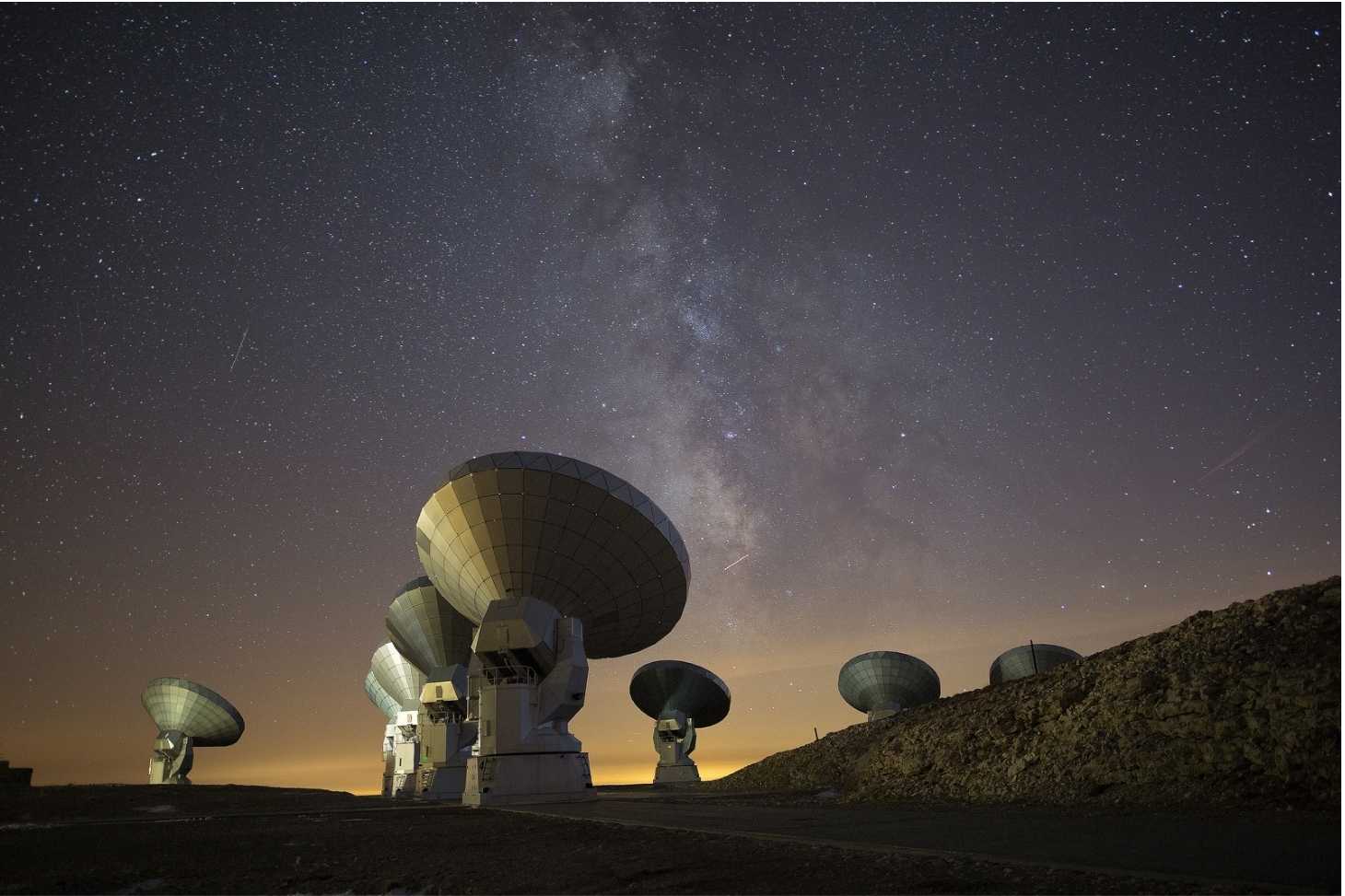
Université Grenoble Alpes (UGA), a long-time partner of the major research infrastructures in its region, is intensifying its scientific collaborations through the GATES project (Grenoble ATtractiveness and ExcellenceS). This ambitious program aims to develop high-level research projects and enhance Grenoble’s attractiveness as a major international scientific hub. As part of this initiative, UGA plans to supervise over 10 PhDs in co-supervision with the EMBL (European Molecular Biology Laboratory), 5 with the EMFL (European Magnetic Field Laboratory), and 8 with the IRAM (Institut de radioastronomie millimétrique) by 2032. Already, 5 doctoral contracts have been launched following two IRGA (Grenoble Alpes Research Initiatives) calls for projects. Meet the award-winning PhD students!
A springboard for research and innovation
The co-supervised PhDs within the GATES program offer doctoral students unique opportunities: dual scientific supervision, access to cutting-edge infrastructure, and strong international visibility. This program strengthens UGA’s scientific excellence and its role within major global research networks.Portraits of the PhD Awardees
Découvrez les parcours et motivations des 5 premiers doctorants ayant intégré ces collaborations prestigieuses, ainsi que les thématiques de recherche qui façonneront les découvertes de demain.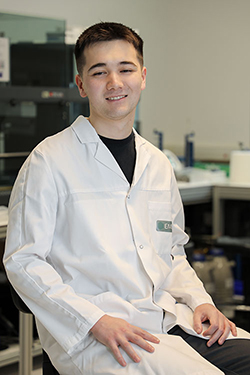 Euan Colaco Osorio is a PhD student at Université Grenoble Alpes within the Doctoral School of Chemistry and Life Sciences. His thesis project, co-supervised by the Institute for Advanced Biosciences (IAB - UGA / INSERM / CNRS) and the EMBL, focuses on exploring poly(A) polymerase as a potential drug target for malaria therapies.
Euan Colaco Osorio is a PhD student at Université Grenoble Alpes within the Doctoral School of Chemistry and Life Sciences. His thesis project, co-supervised by the Institute for Advanced Biosciences (IAB - UGA / INSERM / CNRS) and the EMBL, focuses on exploring poly(A) polymerase as a potential drug target for malaria therapies.He earned a Biochemistry degree from the University of Bristol and completed a summer internship in the Guettler lab at the Institute of Cancer Research (ICR). He later pursued a Master of Research (MRes) in Structural Biology at Imperial College London, conducting his thesis work at the Francis Crick Institute, specializing in X-ray crystallography.
Started in October 2023, his research investigates the pharmacological potential of Poly(A) Polymerase (PAP), a key enzyme in mRNA maturation, aiming to develop inhibitors targeting PAP in Plasmodium falciparum, the malaria-causing parasite. His project combines high-throughput X-ray crystallography screening and complementary biophysical, cellular, and in vivo infection models to validate results.
The project unites the expertise of Andrés Palencia’s team (IAB - CNRS / INSERM / UGA) in drug target identification and compound mechanism characterization with José Marquez’s EMBL team, who specialize in advanced crystallography-based ligand screening technologies.
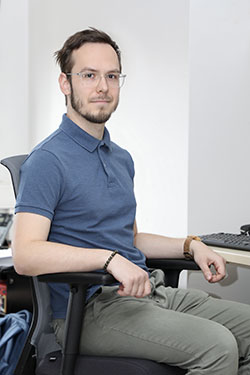 Jan Dzian is a PhD student at Université Grenoble Alpes, enrolled in the Physics Doctoral School. His thesis, carried out at the Laboratoire National des Champs Magnétiques Intenses (LNCMI - CNRS / EMFL / INSA / Université Toulouse III / UGA), is part of a dual PhD with Charles University in Prague. It focuses on the study of collective excitations in quasi-2D antiferromagnetic semiconductors.
Jan Dzian is a PhD student at Université Grenoble Alpes, enrolled in the Physics Doctoral School. His thesis, carried out at the Laboratoire National des Champs Magnétiques Intenses (LNCMI - CNRS / EMFL / INSA / Université Toulouse III / UGA), is part of a dual PhD with Charles University in Prague. It focuses on the study of collective excitations in quasi-2D antiferromagnetic semiconductors.After completing a Master’s at Palacky University in Olomouc, he joined LNCMI as an intern in 2019, an experience that inspired him to pursue a joint PhD between Grenoble and Prague.
His research explores the largely unknown optical and magnetic properties of layered antiferromagnetic materials using advanced techniques such as magneto-IR/THz spectroscopy, magneto-Raman spectroscopy, spectroscopic ellipsometry, and magneto-optical Kerr effect. Working under extreme conditions at LNCMI (temperatures as low as 4.2 K and magnetic fields up to 37 T), he seeks new optical excitations sensitive to magnetic ordering, with potential applications in magnetic materials.
He is co-supervised by Milan Orlita (LNCMI Grenoble) and Martin Veis (Institute of Physics, Charles University Prague).
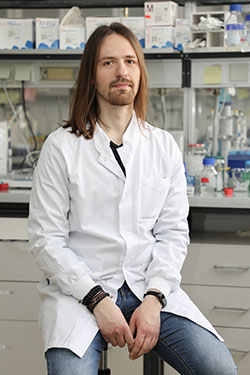 Constantine Méliopoulos is a PhD student at Université Grenoble Alpes in the Chemistry and Life Sciences Doctoral School. His project, co-supervised by the Institut de biologie structurale (IBS - CEA / CNRS / UGA) and EMBL, involves structure-based directed evolution of antiparasitic peptides against Trypanosoma brucei.
Constantine Méliopoulos is a PhD student at Université Grenoble Alpes in the Chemistry and Life Sciences Doctoral School. His project, co-supervised by the Institut de biologie structurale (IBS - CEA / CNRS / UGA) and EMBL, involves structure-based directed evolution of antiparasitic peptides against Trypanosoma brucei.He earned a Bachelor's degree and a Master's in Translational Research in Biomedicine at the Democritus University of Thrace (DUTH) in Greece. He worked on Y-complex nucleoporins in Drosophila and managed DUTH's insect cell expression platform.
Started in October 2023, his research focuses on Trypanosoma, a group of unicellular parasites responsible for neglected tropical diseases like sleeping sickness, Chagas disease, and Nagana. The EvoDrugTryps project explores whether the cap-binding complex (CBC) in T. brucei could serve as a drug target. CBC plays a crucial role in mRNA processing. Recent structural insights reveal significant differences between the human and trypanosomal CBCs, offering a promising therapeutic window.
He is co-supervised by Eva Kowalinski (EMBL Grenoble) and Darren Hart (IBS Grenoble, CNRS).
 Léa Pamphile is a PhD student at Université Grenoble Alpes in the Physics Doctoral School. Her thesis, co-supervised by the Institute of Planetology and Astrophysics of Grenoble (IPAG - OSUG / CNRS / UGA) and the IRAM, focuses on observing high-redshift galaxies using the upgraded NIKA2 camera.
Léa Pamphile is a PhD student at Université Grenoble Alpes in the Physics Doctoral School. Her thesis, co-supervised by the Institute of Planetology and Astrophysics of Grenoble (IPAG - OSUG / CNRS / UGA) and the IRAM, focuses on observing high-redshift galaxies using the upgraded NIKA2 camera.After earning a science-focused Baccalauréat with an Engineering Science major in 2018, she pursued a two-year preparatory course in Physics and Chemistry in Réunion, followed by a Bachelor's in Fundamental Physics at Claude Bernard University in Lyon. She obtained a Master’s in Cosmology from the University of Lyon, completing research internships in both experimental physics and astrophysics at IPAG.
Started in November 2023, her project studies the millimeter-wave emissions from high-redshift galaxies, using NIKA2 at IRAM’s 30-meter telescope in Spain. She investigates their contribution to the Cosmic Infrared Background (CIB) using gravitational lensing by massive foreground galaxy clusters. She also contributes to scientific observation campaigns and performance assessments for the upgraded NIKA2 camera, scheduled for March 2025.
She is co-supervised by François-Xavier Désert (IPAG) and Stefano Berta (IRAM).
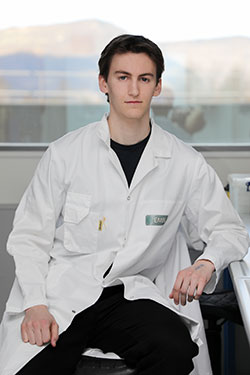 Jean Poylo is a PhD student at Université Grenoble Alpes in the Doctoral School of Chemistry and Life Sciences. His thesis, co-supervised by the Grenoble Institute of Neurosciences (GIN - INSERM / UGA / CEA / CHUGA / CNRS) and the EMBL, investigates the identification and characterization of active Slit protein isoforms in visual system regeneration.
Jean Poylo is a PhD student at Université Grenoble Alpes in the Doctoral School of Chemistry and Life Sciences. His thesis, co-supervised by the Grenoble Institute of Neurosciences (GIN - INSERM / UGA / CEA / CHUGA / CNRS) and the EMBL, investigates the identification and characterization of active Slit protein isoforms in visual system regeneration.He earned a degree in Biomedical Sciences from the University of Warwick (UK), with a computational project on Tat transporter structure. He completed a Master’s in Royle’s lab studying intracellular nanovesicle subtypes using cell biology techniques.
After brain damage, the nerves may be severed and have to regrow to find their targets. The guidance process (growth direction, for example) of these nerves has long been studied during early development, but very little in adults. Starting in October 2024, his project focuses on the adult brain, studying the role of a particular pair of proteins: Slits (which are the ligands) and Robo, their receptors expressed at the end of growing axons. His work at EMBL focuses on generating various forms of the Slit protein in complex with different receptors, using cryo-electron microscopy or X-ray crystallography methods. In parallel, he is testing the functional role of these proteins at the Grenoble Institute of Neuroscience (GIN) by examining their activity during nerve regeneration in mice. The aim of his research is to gain a molecular understanding of how Slit proteins function, in order to improve our ability to develop therapies for the repair of the nervous system after injury.
He is co-supervised by Andrew McCarthy, team leader (EMBL) and Homaira Nawabi, research director (GIN).
EMBL, a European leader in molecular biology
EMBL is Europe's laboratory for the life sciences. It provides leadership and coordination for life sciences across Europe, and its world-class basic research aims to find collaborative, interdisciplinary solutions to some of society's greatest challenges. It trains students and scientists, promotes the development of new technologies and methods in the life sciences, and provides state-of-the-art research infrastructure for a wide range of experimental and data services. EMBL is an intergovernmental organization with 29 member states, one associate member and one prospective member. At its six sites in Barcelona, Grenoble, Hamburg, Heidelberg, Hinxton near Cambridge and Rome, it seeks to better understand life in its natural context, from molecules to ecosystems. EMBL Grenoble specializes in research, services and instrument development in the field of structural biology.
EMFL, extreme magnetic fields at the service of research
The European Magnetic Field Laboratory (EMFL) was founded in 2015 and received Landmark status in March 2016 at the ESFRI Roadmap presentation in Amsterdam. EMFL provides the highest possible fields (both continuous and pulsed) to its researchers. EMFL's mission is to unite, coordinate and strengthen the four existing European intense magnetic field laboratories - Dresden High Magnetic Field Laboratory (Germany), Laboratoire National des Champs Magnétiques Intenses de Grenoble et de Toulouse (France) and High Magnetic Field Laboratory in Nijmegen (Netherlands) - within a single organization, as one of the leading infrastructures of its kind in the world.
IRAM, at the cutting edge of Universe exploration
IRAM based on the Saint-Martin-d'Hères university campus, is an international research institute dedicated to the study of the Universe in millimeter waves. It plays a key role in exploring the formation of stars and galaxies, and in characterizing interstellar environments and exoplanets. Thanks to its state-of-the-art observatories, notably its network of 12 antennas forming the NOEMA interferometer in the French Alps and the 30-meter radio telescope in Spain's Sierra Nevada, IRAM is developing advanced technologies for astronomical observation. It trains the next generation of scientists and engineers, and encourages interdisciplinary collaboration to meet the major challenges of modern astrophysics. An international organization founded by CNRS (France), MPG (Germany) and IGN (Spain), IRAM collaborates with institutions worldwide to push back the frontiers of our understanding of the cosmos.
Published on April 15, 2025
Updated on April 18, 2025
Updated on April 18, 2025
Learn more
The GATES project strengthens collaboration with the ILL. UGA and ILL already maintain strong ties through research partnerships and training programs. This cooperation fosters research and innovation, particularly in the fields of materials science, structural biology, chemistry, and nuclear and particle physics.
As part of the GATES project, an annual call for co-supervised PhD theses is launched. Formerly known as IRGA, the call is now titled GATES@UGA PhD and is announced and shared with laboratories in the fall. It allows research pairs (UGA–Large Instrument) to submit an application consisting of a research project. The selection results are published in the spring, with the PhD work beginning in the last quarter of the year.
As part of the GATES project, an annual call for co-supervised PhD theses is launched. Formerly known as IRGA, the call is now titled GATES@UGA PhD and is announced and shared with laboratories in the fall. It allows research pairs (UGA–Large Instrument) to submit an application consisting of a research project. The selection results are published in the spring, with the PhD work beginning in the last quarter of the year.

This project is supported by funding from the French government, managed by the National Research Agency under the Investments for the Future program, reference number ANR-22-EXES-0001.

